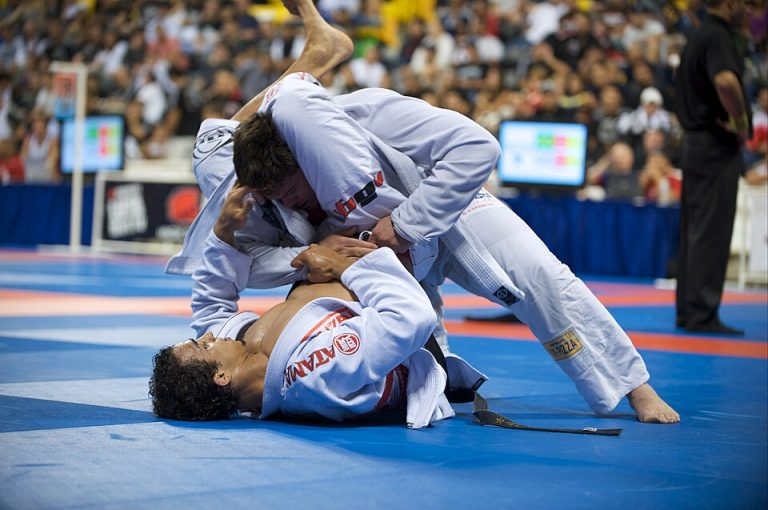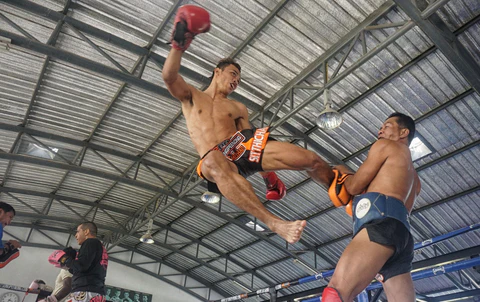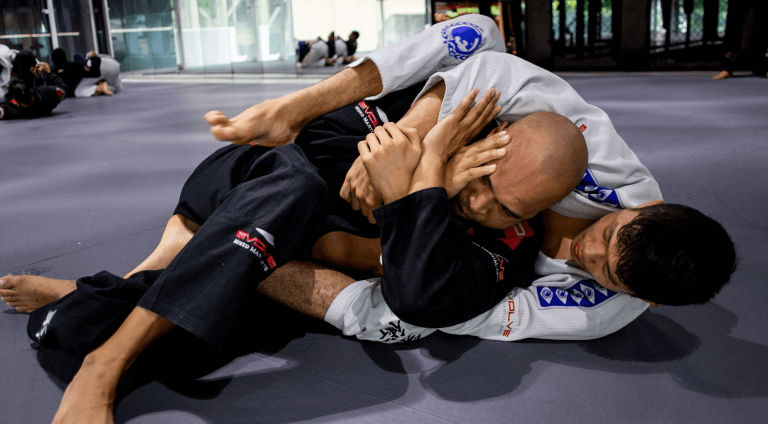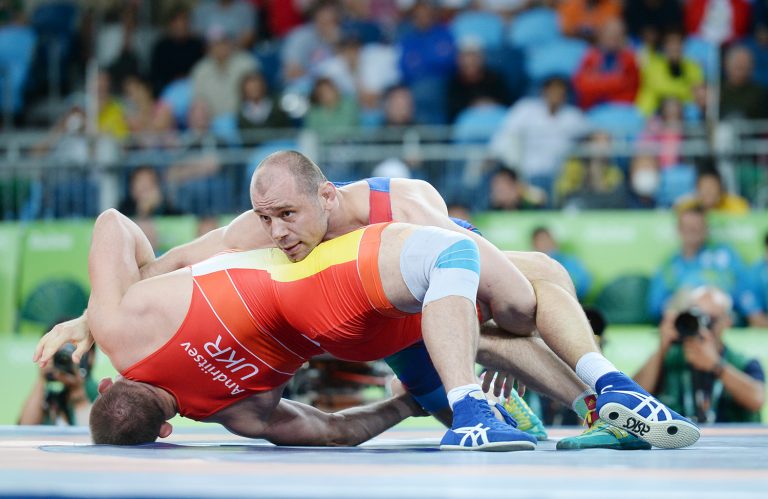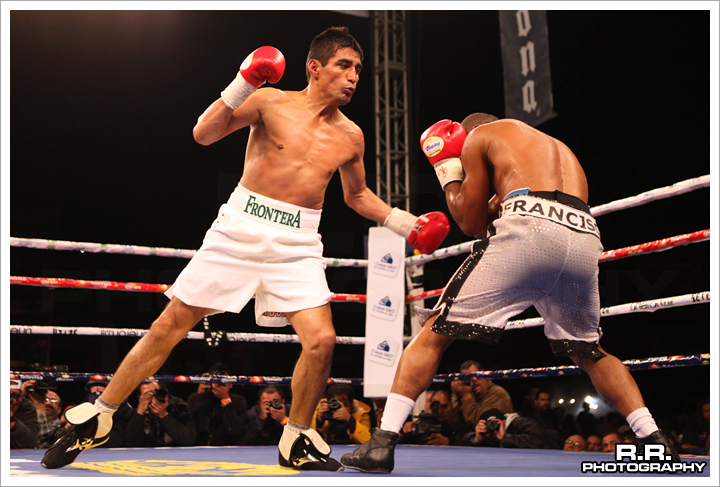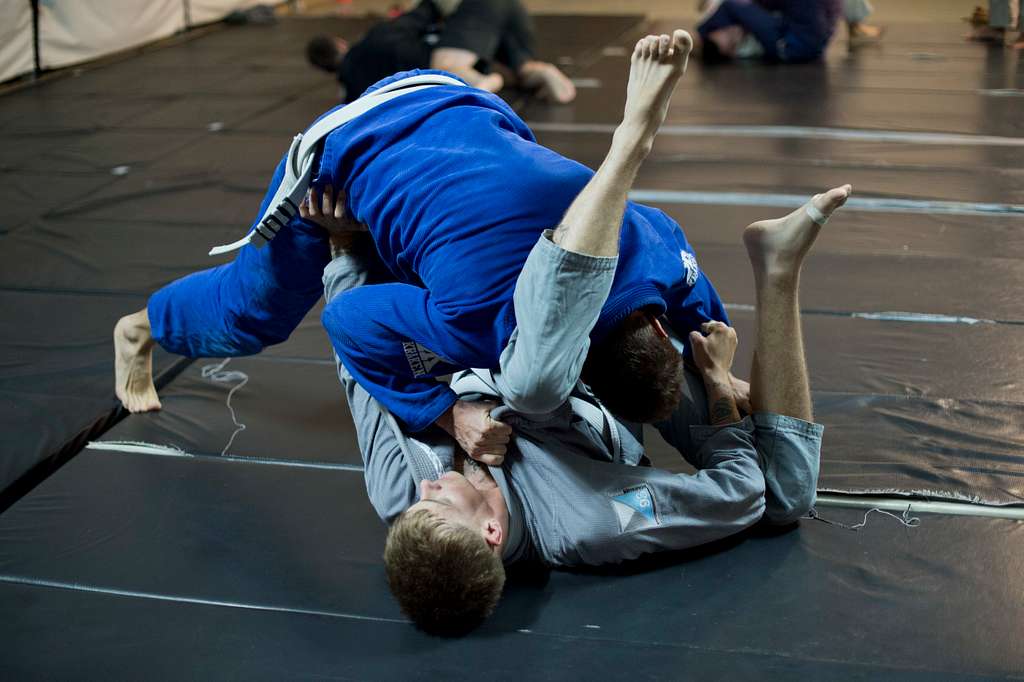
The debate over Sport Jiu-Jitsu vs. Traditional Jiu-Jitsu has been going on since the Gracies modified the ancient fighting art. If you’ve ever watched a Brazilian Jiu-Jitsu (BJJ) match, you’ve probably wondered: Why is that person lying on their back? Or Why aren’t they punching each other? Spoiler: They’re not napping.
They’re practicing one of two distinct styles—Sport Jiu-Jitsu or Traditional Jiu-Jitsu. Both share DNA but cater to different goals. Let’s break down their histories, philosophies, and which might make you a human pretzel (in the best way).
Sport Jiu-Jitsu vs. Traditional Jiu-Jitsu: From Samurai to Submissions
Before we dive into the sport vs. traditional debate, let’s rewind 2,500 years. Grappling traces back to ancient Greek pankration and Egyptian tomb art, but modern Jiu-Jitsu began with Buddhist monks in India.
Needing non-violent ways to defend themselves, they developed joint locks and throws—Fast-forward to feudal Japan, where Jujutsu became the samurai’s plan B when disarmed. Strikes were useless against armor, so they relied on pins, chokes, and submissions—sound familiar?
In 1914, Japanese judoka Mitsuyo Maeda brought Judo (Jujutsu’s streamlined cousin) to Brazil. His students, the Gracie family, adapted it into Brazilian Jiu-Jitsu (BJJ) by emphasizing ground fighting (ne-waza) and leverage over brute strength. The Gracies famously challenged fighters of all disciplines in vale tudo (“anything goes”) matches, proving BJJ’s effectiveness. When Royce Gracie dominated early UFC events in the 1990s, winning three of the first four tournaments, BJJ exploded globally.
Today, BJJ splits into two branches: Traditional (self-defense-focused) and Sport (competition-driven). Let’s roll into the details.
What Is Sport Jiu-Jitsu? Points, Guards, and the Quest for Gold
Sport Jiu-Jitsu is like chess but sweatier. Governed by organizations like the International Brazilian Jiu-Jitsu Federation (IBJJF) and ADCC, it revolves around tournaments with strict rules, weight classes, and scoring systems. Here’s what defines it:
Rules and Scoring: Win by Strategy, Not Survival
- Gi (Kimono) vs. No-Gi: Sport BJJ splits into two formats. Gi grappling uses the traditional uniform for grips and chokes (like using a jacket collar), while No-Gi (popularized by events like ADCC) doesn’t allow you to grab onto any part of your opponent’s clothing.
- Point System: Earn points for dominant positions—4 for a mount, 3 for a takedown, 2 for a sweep. Submissions (armbars, triangles) end the match instantly.
- Forbidden Moves: Depending on belt level, techniques like heel hooks, neck cranks, or slams might be banned to reduce injury risk.
Competition Culture: From Local Mats to World Stages
Sport BJJ athletes train for events like the IBJJF Worlds or ADCC Championships, where victories boost credibility (and sponsorship deals). Competitors often specialize in “game plans” tailored to their body type—think lanky guardsmen vs. stocky pressure passers.
Despite countless complaints, impractical techniques like pulling guard are common in such tournaments since they work to get the fight to the ground. However, pulling guard is about as useful as a screen door on a submarine in a street fight.
The Good and the Grippy
- Pros: Sharpens technical precision, physical fitness, and mental resilience. The thrill of competition, the rush of adrenaline, is truly addictive.
- Cons: Over-reliance on rules can create “sport-only” habits (e.g., exposing your back for a sweep). Also, knee injuries. So many knee injuries.
Traditional Jiu-Jitsu: Self-Defense, Survival, and the Art of Not Dying
Traditional Jiu-Jitsu prepares you for scenarios like an angry drunk lunging at you for no reason. It’s built for real-world chaos—no referees, no points, and definitely no timeouts. It’s about survival, about being prepared for the unexpected.
Street-Smart Techniques
- Gi Training as Real-Life Prep: Training in a gi mimics defending against someone grabbing your jacket or shirt. You’ll learn to counter headlocks, haymakers, and weapon threats (yes, they teach knife disarms).
- No Mercy Submissions: Traditional Jiu-Jitsu prioritizes fight-enders like chokeholds and joint locks over positional points. Think “escape, survive, and neutralize” over “score and pose.”
- Scenario Drills: Classes simulate mugging scenarios, multiple attackers, or ground-and-pound situations.
The Gracie Legacy
The Gracie family’s Helio Gracie designed BJJ for smaller fighters to overcome larger foes. Their Gracie Combatives program, a part of the Gracie Academy, focuses on 36 core techniques proven in street fights, emphasizing practical self-defense over sport competition.
Fun Fact: Rorion Gracie co-founded the UFC to showcase BJJ’s effectiveness. Thanks, Rorion, for making “armbar” a household term.
Why It’s Essential
- Pros: Builds instinctive reactions for self-defense. You’ll learn to weaponize everyday items (keys, pens) and de-escalate conflicts.
- Cons: Less flashy than sports moves. Also, there are no shiny medals—just the satisfaction of not getting punched.
Sport vs. Traditional Jiu-Jitsu: Key Differences at a Glance
| Factor | Sport Jiu-Jitsu | Traditional Jiu-Jitsu |
|---|---|---|
| Primary Goal | Win competitions | Survive real-world threats |
| Training Attire | Gi or No-Gi rash guards | Gi (simulates street clothes) |
| Techniques | Guard pulls, berimbolos, lapel guards | Strikes, weapon defense, scrambles |
| Rule Dependency | High (points, illegal moves) | Low (“anything goes” mindset) |
| Best For | Athletes, competitors | Civilians, self-defense enthusiasts |
Which Should You Choose? Spoiler: Why Not Both?
- For Competitors: Sport BJJ’s structured environment hones technical mastery. Plus, who doesn’t love a gold medal?
- For Practicality: Traditional BJJ prepares you for unpredictable situations. Because let’s face it—muggers won’t care about your sick spider guard.
- Hybrid Approach: Many gyms blend both styles—train Sport BJJ for athleticism and Traditional for street smarts. It’s about being open-minded, about embracing the best of both worlds. Just avoid trying berimbolos on concrete.
5 Tips to Maximize Your BJJ Journey
- Drill Real-World Escapes: Practice bridging, shrimping, and standing up from bad positions. Your future self will thank you.
- Cross-Train Judo or Wrestling: Takedowns win fights—and impromptu grappling matches at family reunions.
- Condition Your Grip Strength: Buy a stress ball, perform deadlifts at the gym, or just open jars for friends.
- Watch Matches Critically: Study ADCC highlights or Gracie self-defense videos on YouTube.
- Tap Early, Tap Often: Your ego heals faster than a torn ACL.
Final Takeaway: Embrace the Gentle Art
Whether you’re chasing podiums or peace of mind, Jiu-Jitsu teaches discipline, humility, and how to fold clothes… while someone’s still wearing them. You’ll become a well-rounded grappler who’s ready for the mats and the mean streets by understanding the strengths and weaknesses of sport and traditional BJJ.
Read more:
Jake Paul Promises to Leave Boxing if UFC Improves Fighter Pay and Benefits
Training Martial Arts with Chronic Pain: How to Adapt Without Giving Up Your Passion
Orthodox vs. Southpaw: How to Choose Your Ultimate Fighting Stance (And Crush Your Opponent)
The 10 Greatest Heavyweight Boxing Champions of All Time: Legends, Knockouts, and Legacy
UFC’s Dana White Blasts Bryce Mitchell Over Holocaust Denial: Why the MMA World is Furious


